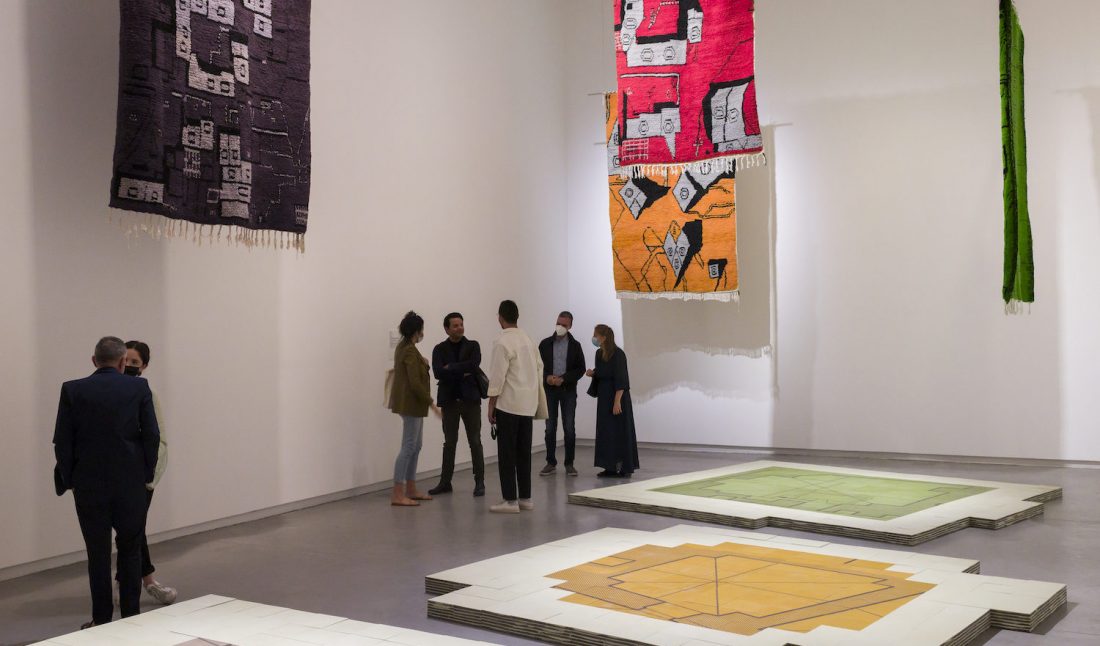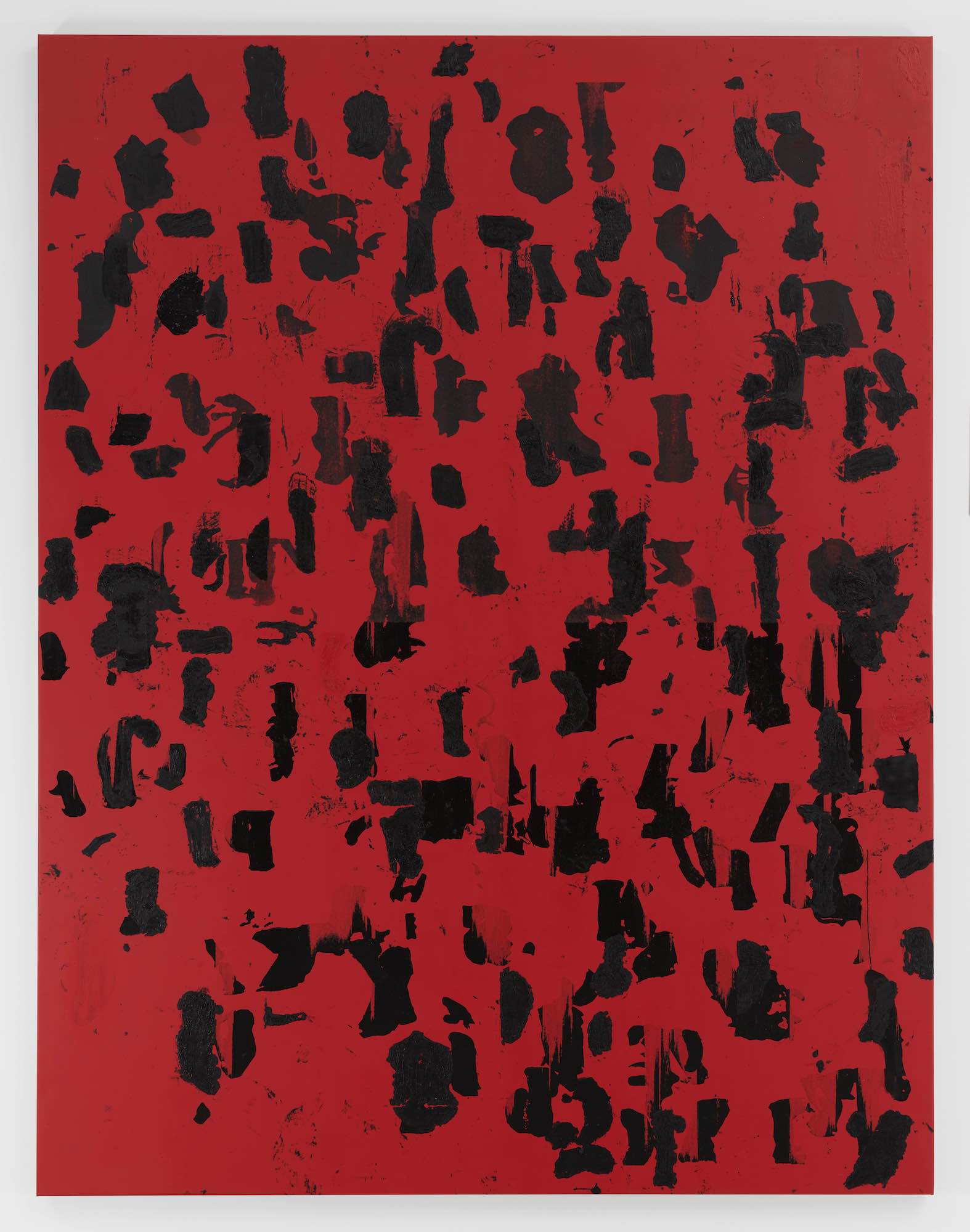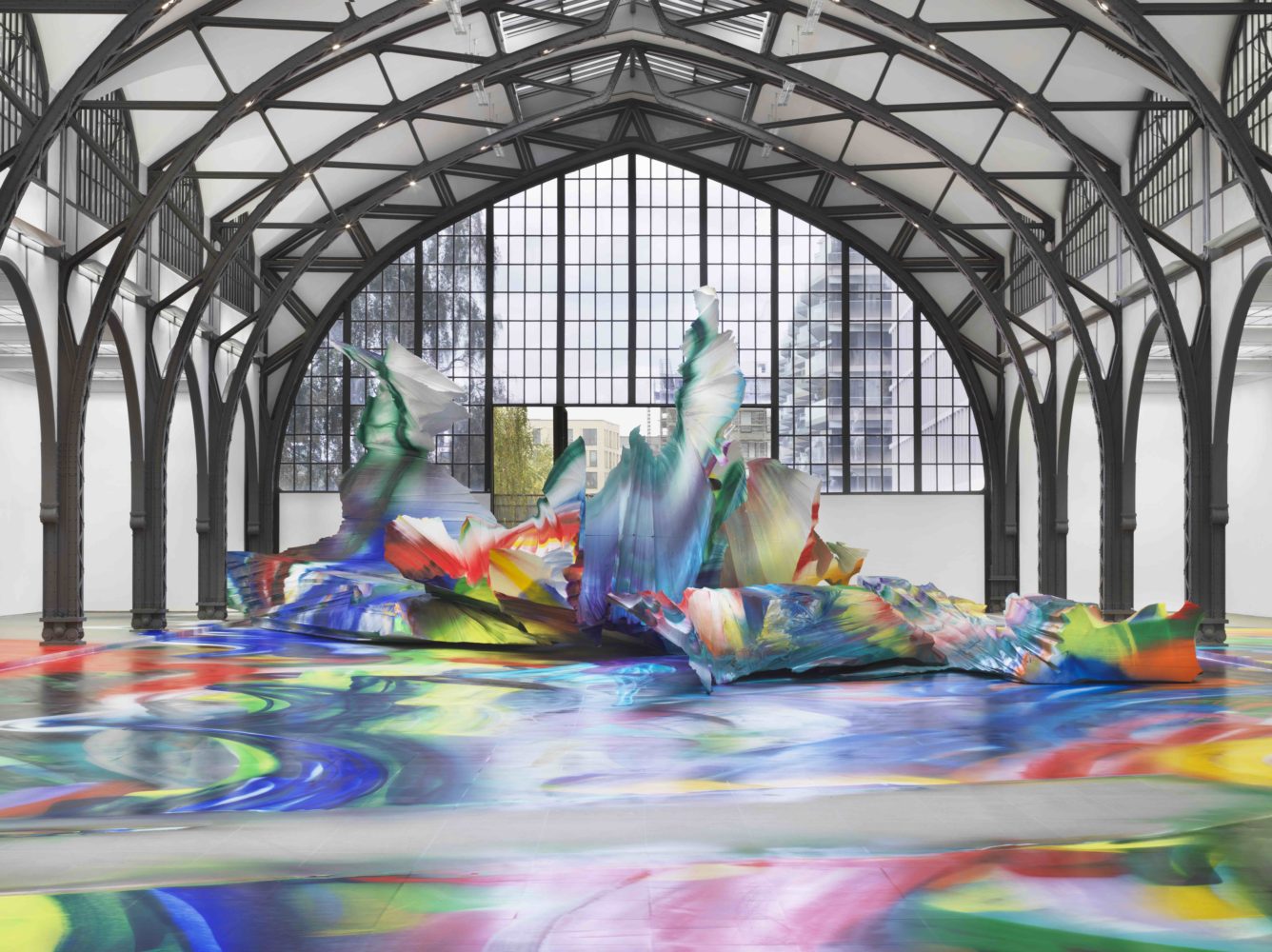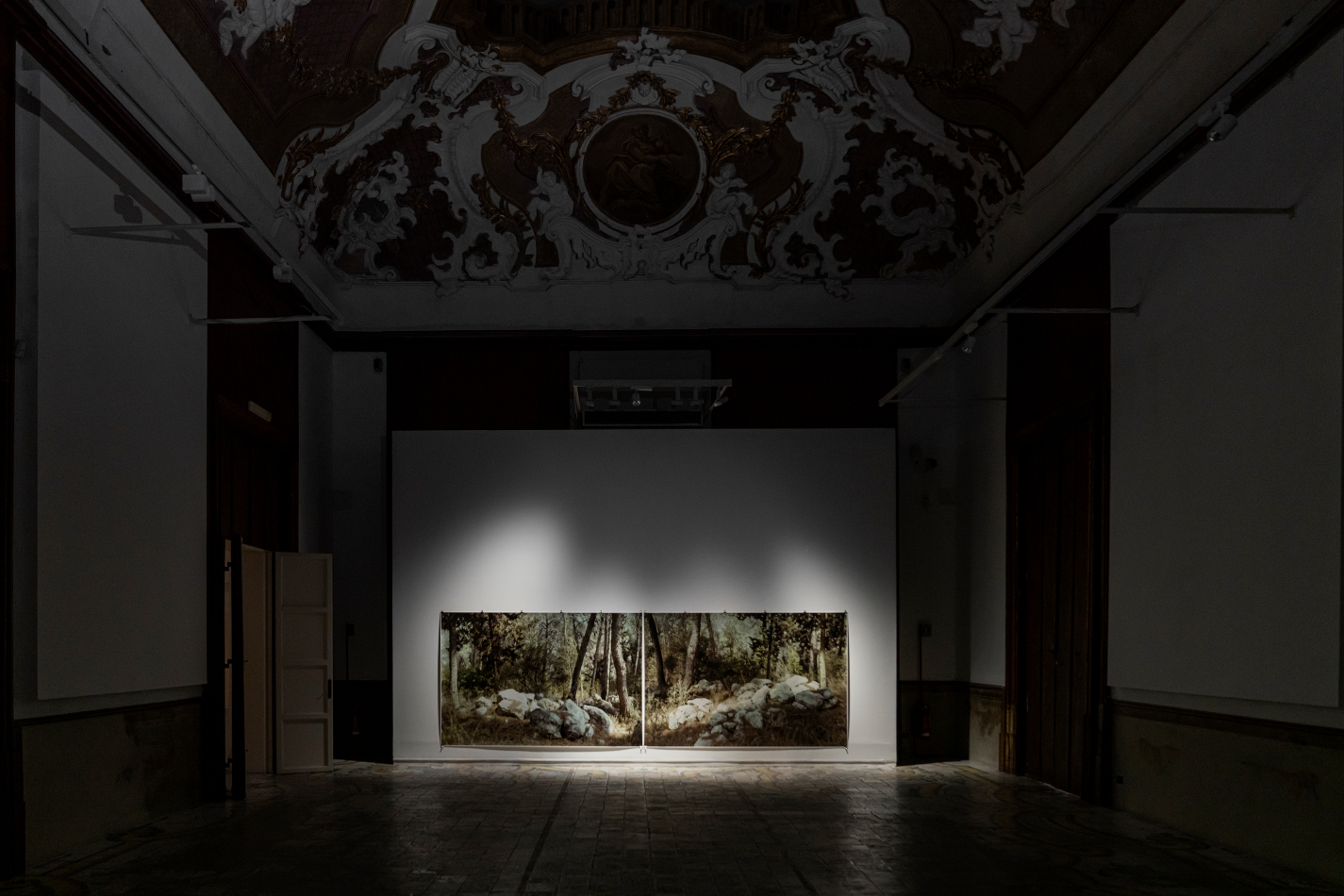Khalil Rabah has spent his career in art dissecting history. Through a multifaceted practice of painting, sculpture, installation, and more, the Palestinian artist questions public perception, expectation, and modes of exhibition. His shows are anchored in themes surrounding displacement, crisis, memory, or identity, and look at the relationship between humans and their surroundings—particularly Western concepts like museology and ethnography.
Born in Jerusalem and based in Ramallah, Rabah is also the artistic director of Riwaq Biennale, Ramallah; founder of the Palestinian Museum of Natural History and Humankind; and co founder of Al Ma’mal Foundation for Contemporary Art, Jerusalem. Recently, Whitewall spoke with Rabah at the opening of his show “What is not” (March 4–July 4) at the Sharjah Art Foundation in the UAE. Curated by the foundation’s director, Hoor Al Qasimi, it features significant works created over the past three decades, new installations, and commissioned pieces like On what grounds—an installation that speaks to the artist’s living and working conditions in Ramallah. Primarily, it explores the social, cultural, and political value of artifacts.
Ahead of debuting a monograph and opening a solo show entitled “Relocation, Among Other Things” at Salzburger Kunstverein in Austria this summer, Rabah shared why his work explores the global human condition and how he’s reshaping historical visual narratives.
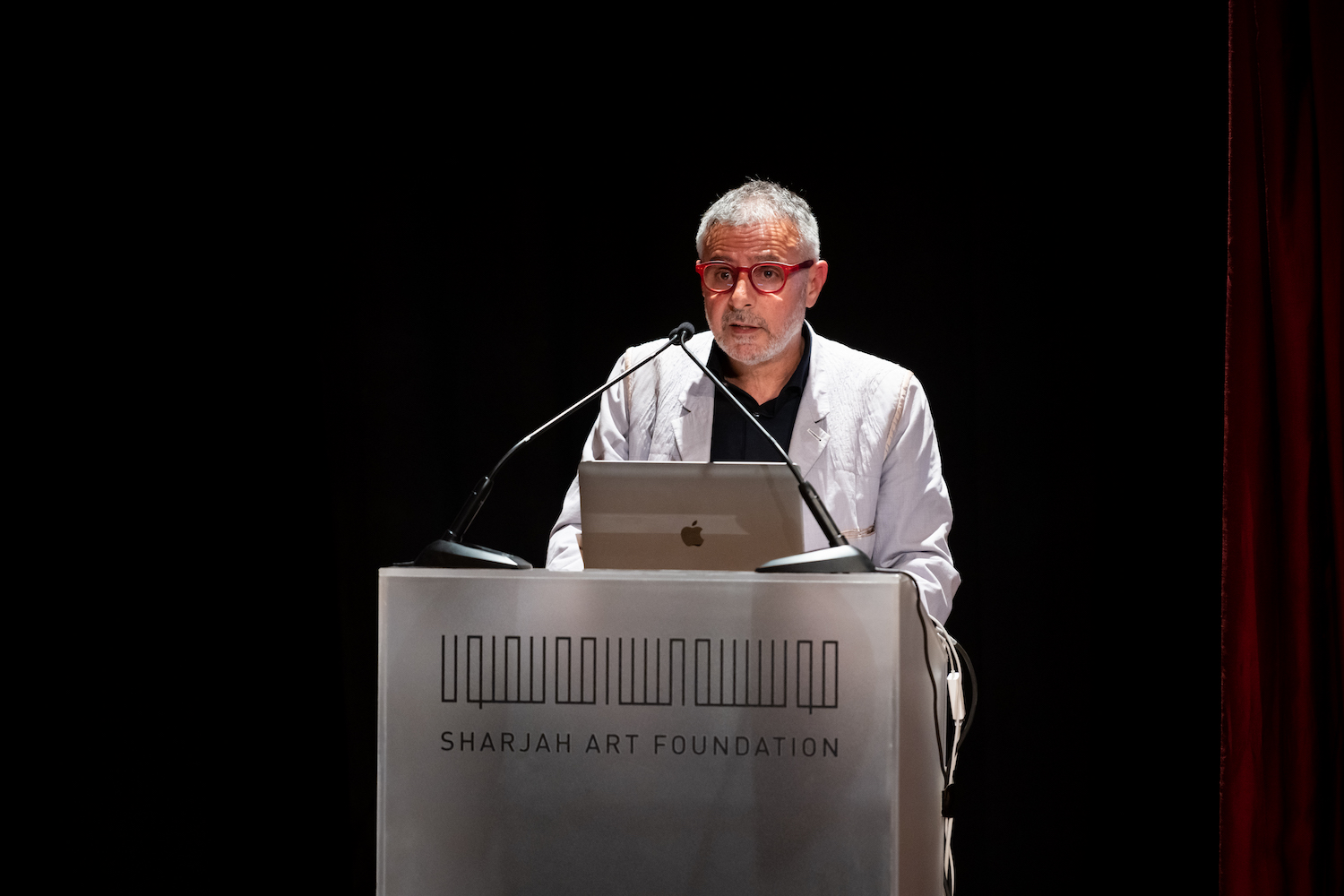 Khalil Rabah speaking at March Meeting, Sharjah Art Foundation, 2022, photo by Shafeek Nalakath
Kareem, courtesy of the Sharjah Art Foundation.
Khalil Rabah speaking at March Meeting, Sharjah Art Foundation, 2022, photo by Shafeek Nalakath
Kareem, courtesy of the Sharjah Art Foundation.
WHITEWALL: Your presentation “What is not” at the Sharjah Art Foundation was a large offering of many mediums. What was the starting point?
KHALIL RABAH: The exhibition was conceived with the curator Hoor Al Qasimi to present an overview of ongoing projects including the Palestinian Museum of Natural History and Humankind, the Riwaq Biennale, “Scale Models,” and “Collaborations by in form.” Two elements conceptually structure the apparatus in the exhibition—the works, the objects themselves; and the phantom, the physical space that the projects assume. The potentiality that is not.
WW: How is the impact of living and working in Ramallah seen through your exhibition “What is not”?
KR: It reflects my work, space, and studio regarding the nature and the condition of living and working in Ramallah.
by in form is a three-story unfinished, evolving structure in Ramallah, Palestine—a building project for making and presenting art, which I employ as a site and instigator for multidisciplinary activities that prioritize artistic gesture over institutional responsibility. By
conceptualizing a collaboration between two ongoing projects—the Palestinian Museum of Natural History and Humankind and the Riwaq Biennale—by in form activates On what grounds. The work makes use of the museum’s botanical department’s collection of natural dyes extracted from the flora of the villages that have disappeared, and those that still remain, and the natural pigments archived by the geology department. These elements are utilized to illustrate prototypes of village homes, using survey documents from the archives of the Riwaq Biennale.
The installation features five geometric islands on the floor constructed entirely of hundreds of piled tiles stacked in varying heights, reflecting the sloping topography of the land. Each mass is shaped to represent the plan of a room, the five coming together to form the foundations of a traditional Palestinian domestic space. Imprinted on top with pigments are the floor plans of these homes. The empty spaces between the island-rooms symbolize walls—once offering fortification and privacy, now laid open to walk through.
On top of the foundations, suspended from the ceiling, is a hanging display of hand-embroidered carpets that represent the site plans of village homes, colored with the dyes of the flora that once surrounded them. Together, the ground and sky turn the gaze upside down on what Rabah calls the remains and the remaining.
On what grounds navigates the possibilities of collaborating between the museum and the biennale, and challenging their individual strategies to evolve and discover the potential for creating something entirely new—belonging to neither, but generated by both.
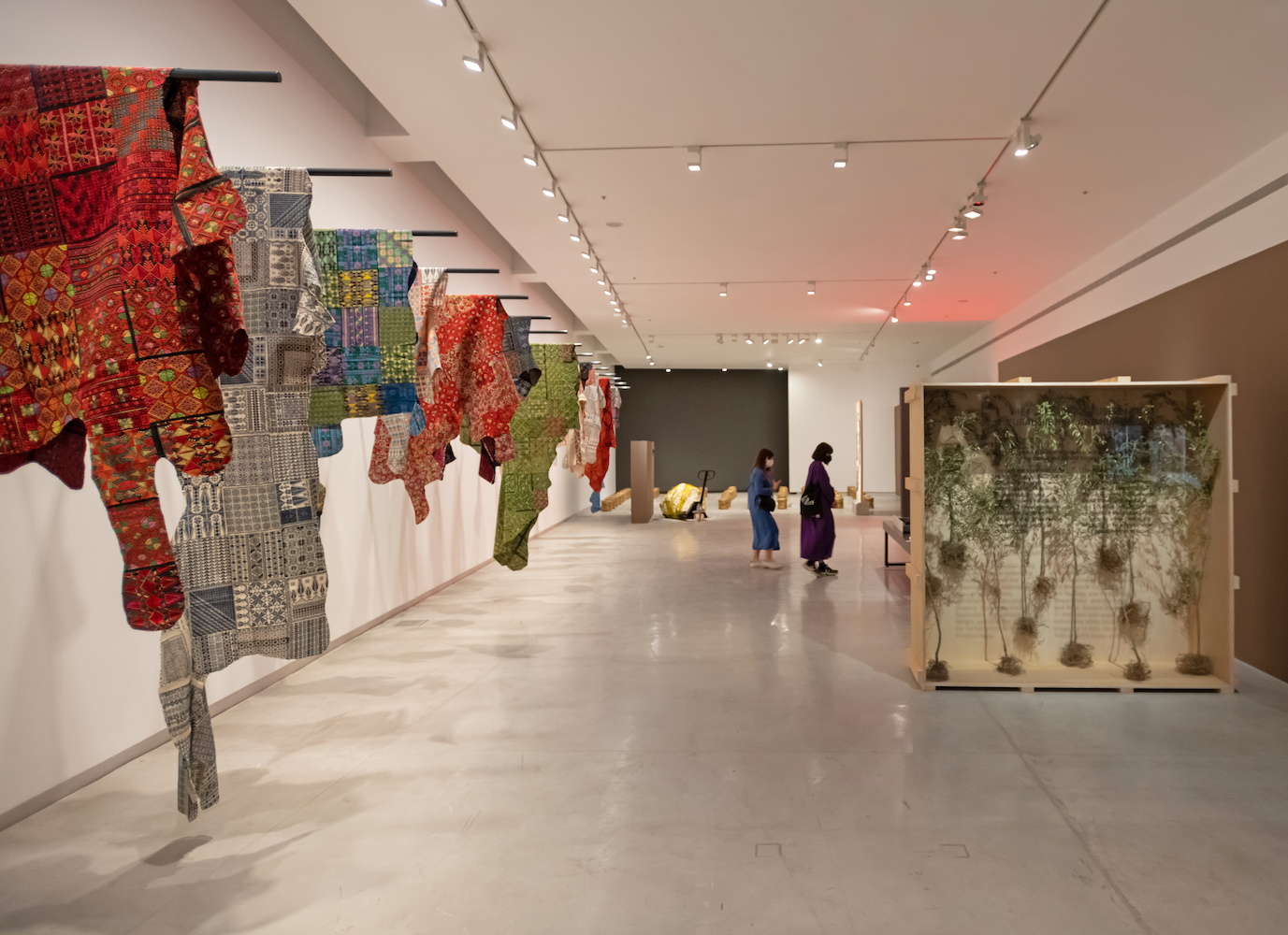 Installation view of “Khalil Rabah: What is not” at the Sharjah Art Foundation, 2022, photo by Danko Stjepanovic, courtesy of the Sharjah Art Foundation.
Installation view of “Khalil Rabah: What is not” at the Sharjah Art Foundation, 2022, photo by Danko Stjepanovic, courtesy of the Sharjah Art Foundation.
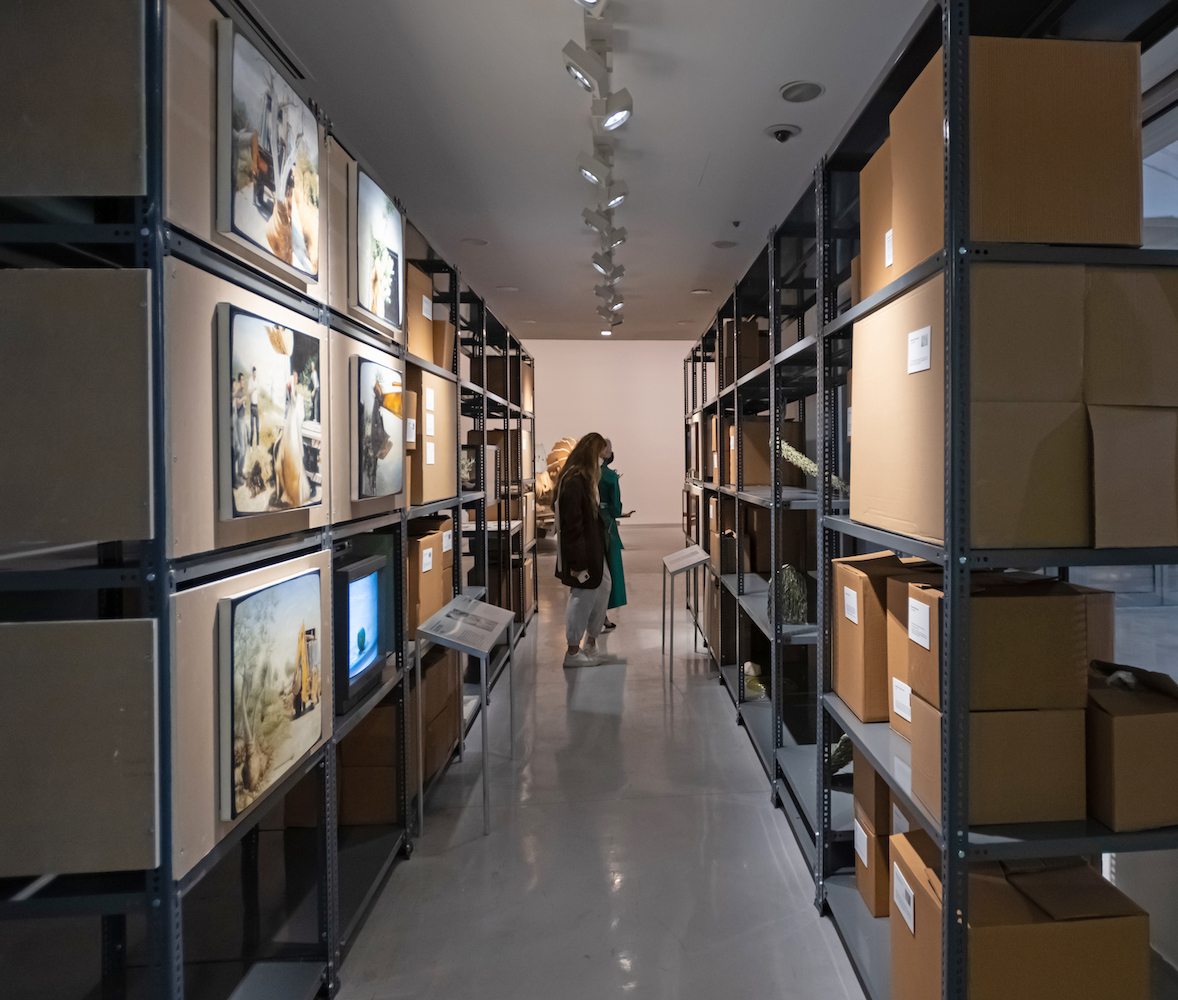 Khalil Rabah, “Always in between, and/or another timeline,” 1995–2015, Mixed media installation; dimensions variable. Exhibition view: “What is not,” Sharjah Art Foundation, 2022; photo by Shanavas Jamaluddin, courtesy of the artist.
Khalil Rabah, “Always in between, and/or another timeline,” 1995–2015, Mixed media installation; dimensions variable. Exhibition view: “What is not,” Sharjah Art Foundation, 2022; photo by Shanavas Jamaluddin, courtesy of the artist.
WW: How does your practice address the global human condition?
KR: In art you can work with material and immaterial setups and situations in order to question them and share your proposed speculative structural frameworks for exploring how we understand the political economies that underwrite cultural institutions, arts management, curatorial practice, museology, and the production of critical knowledge under long-standing states of emergency.
In appropriating and strategically deploying institutional devices, specifically their material and immaterial ecologies of value, it underscores how discursive power resides in their often occluded ability to replicate structures that anticipate value (in political and cultural terms), while simultaneously excluding other forms of value and authority.
While the title of these ventures, for example, The Palestinian Museum of Natural History and Humankind, positions them in context of recent and future Palestinian history, nevertheless that they also propose, reveal, and unpack broader concerns about the global infrastructure of visual arts production and contemporary debates about “value”— be it economic, cultural, political, or historical.
The forthcoming monograph I am currently working on explores more in depth the nature of these concerns, conditions, and issues.
WW: You’re also the artistic director of the Riwaq Biennale, which was named after an institution and not a place. How is it working to protect and promote cultural heritage in Palestine?
KR: It was initiated in 2005 to expand upon Riwaq’s approach aiming at the revitalization of historic centers of 50 towns and villages throughout Palestine. In other words, this biennale comes with an agenda. It is invested in Riwaq’s efforts to clarify the growing political and epistemic significance of architectural heritage in local towns and villages. The fifth Riwaq Biennale (RB5) took place from 2014 to 2016 and ran for the duration of two years in response to a critical inquiry into the nature of biennales, which traditionally take place every two years.
With each edition positioning new questions, conversations continually revolved around the function and utility of the biennale and whether its role worked in congruence with architectural conservation and rehabilitation efforts, which were the original objectives of the Riwaq Centre. At the time of RB5, rigid lines demarcating art, architecture, conservation, education, and design had begun to blur, and it became evident that while the community built the biennale, the biennale also, in turn, built community.
 Khalil Rabah, “About the Museum,” 2004, Mixed media installation; wooden box, glass, 11 olive trees, text; overall dimensions: 200 x 200 x 64 cm; Installation view: Mediterraneans Arte Contemporanea, MACRO al Mattatoio, Museo d’Arte Contemporanea, Rome; courtesy of the artist and Sfeir-Semler Gallery, Beirut/Hamburg.
Khalil Rabah, “About the Museum,” 2004, Mixed media installation; wooden box, glass, 11 olive trees, text; overall dimensions: 200 x 200 x 64 cm; Installation view: Mediterraneans Arte Contemporanea, MACRO al Mattatoio, Museo d’Arte Contemporanea, Rome; courtesy of the artist and Sfeir-Semler Gallery, Beirut/Hamburg.
 Khalil Rabah, “Act III: Molding,” 2012, Neon; 120 × 220 × 320 cm; installation view: “In this issue,” Beirut Art Center; courtesy of the artist and Sfeir-Semler Gallery Beirut/Hamburg.
Khalil Rabah, “Act III: Molding,” 2012, Neon; 120 × 220 × 320 cm; installation view: “In this issue,” Beirut Art Center; courtesy of the artist and Sfeir-Semler Gallery Beirut/Hamburg.
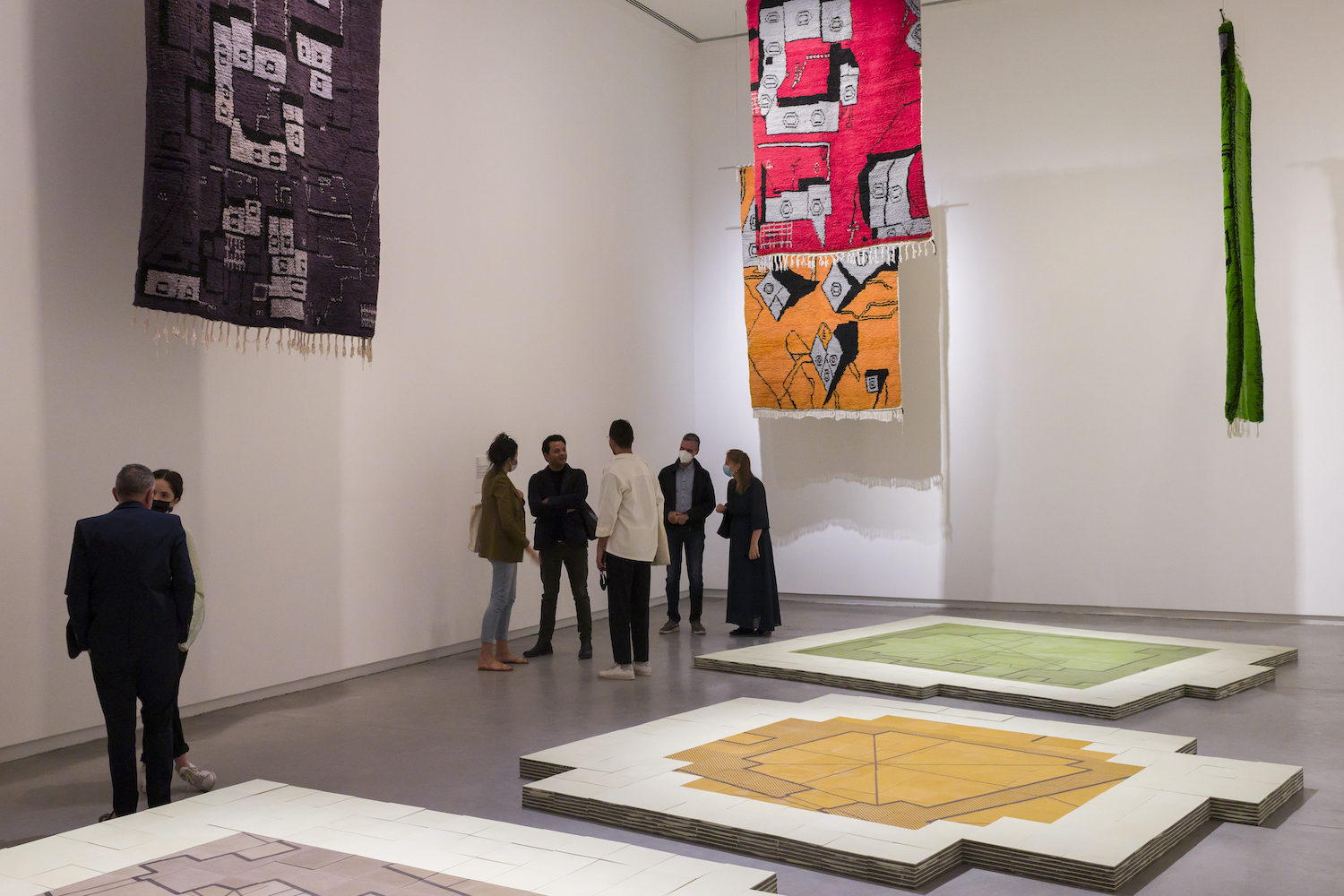 Installation view of “Khalil Rabah: What is not” at the Sharjah Art Foundation, 2022, photo by Danko Stjepanovic, courtesy of the Sharjah Art Foundation.
Installation view of “Khalil Rabah: What is not” at the Sharjah Art Foundation, 2022, photo by Danko Stjepanovic, courtesy of the Sharjah Art Foundation.






